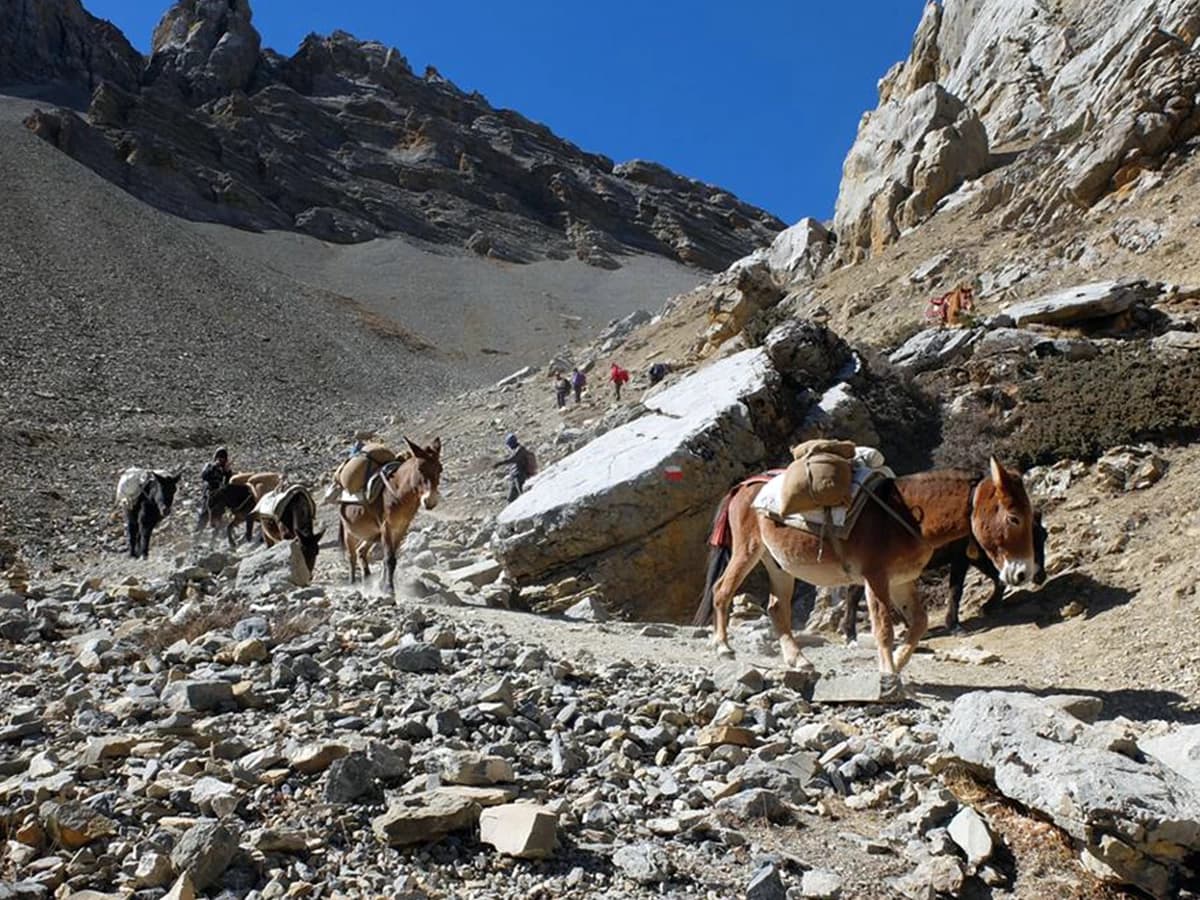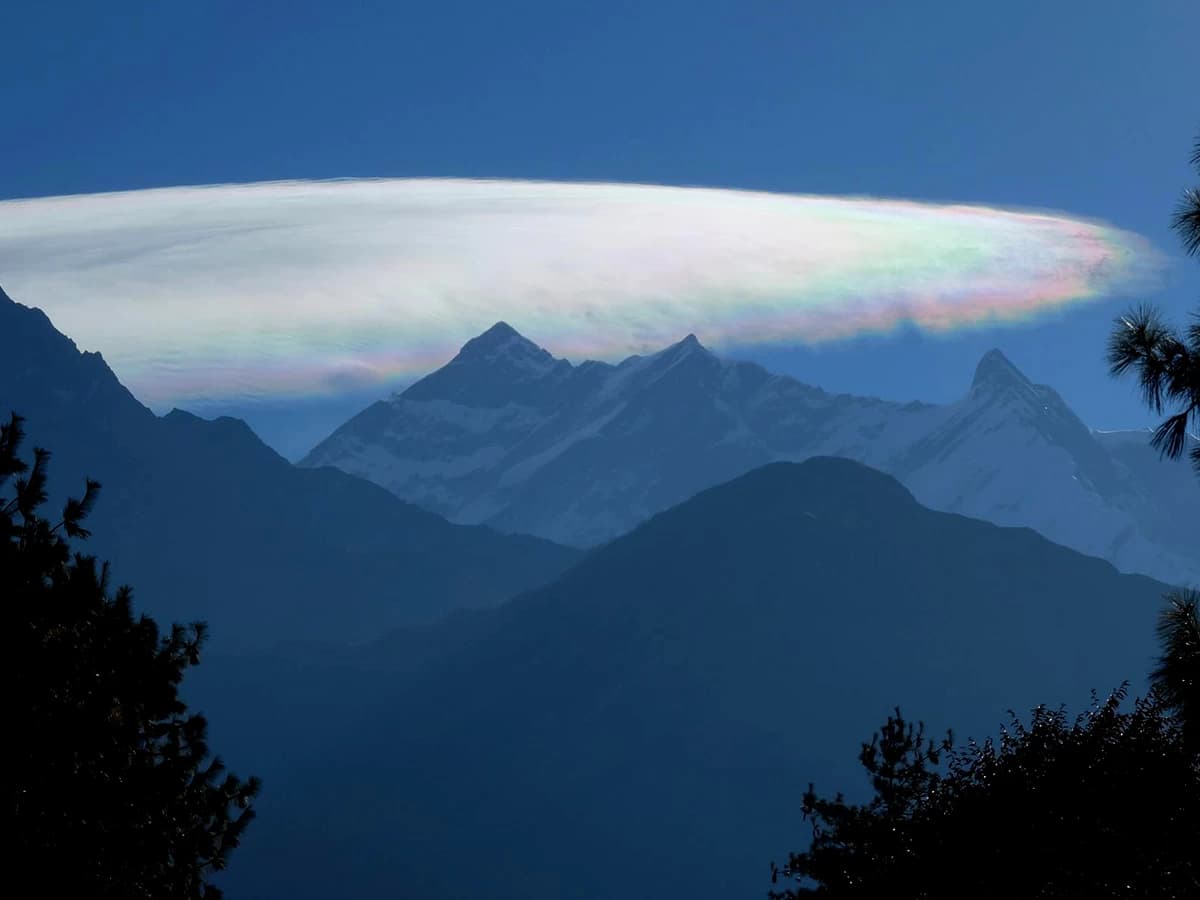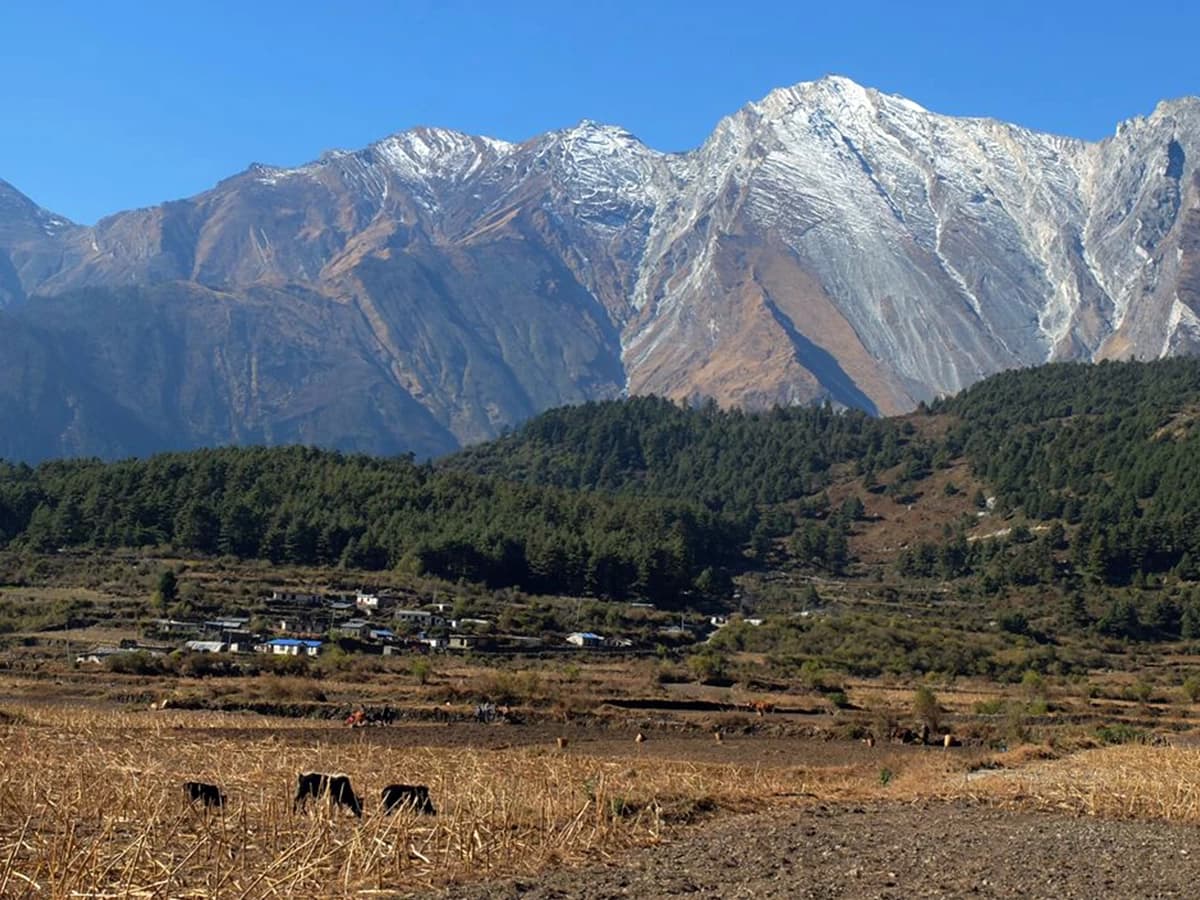The Annapurna Base Camp Trek in Nepal is one of the most popular, beginner-friendly, and rewarding treks in the Annapurna Trekking Region that takes you closer to the world’s tenth-highest peak, Mount Annapurna (8,091 m). The 14-day itinerary for the Annapurna Sanctuary Trekking, another name for the Annapurna Base Camp Hiking, begins from Pokhara on the second day with a drive to Nayapul, the typical trek starting point, concluding for the day at Tikhedhunga. Then, you will slowly progress through lush forests, charming villages, and terraced fields showcasing diverse Himalayan landscapes and rich culture amidst the serene beauty of the Himalayas. Depending on the trekker's chosen route and pace, a standard Annapurna Base Camp hiking itinerary can span anywhere from 11 days to 14 days, and more, where the side trip adds much to the thrill.
Further, as one of the highly experienced locally based travel, trek, tour, and expedition operators in Nepal, we offer you a flexible itinerary that can be customized as per your needs, preferences, and requirements. Suppose your health supports you and you are physically fit. In that case, you can extend your Annapurna Himalayan Trek by joining the Annapurna Circuit Trekking Trail or at least to Tilicho Lake, the highest lake in the world at an altitude of 4,919 m above sea level. However, it also means a slight increase in the Annapurna Base Camp Trek cost that, in general, includes all the essential trekking logistics such as essential meals, accommodation, permits, licensed guides, and porters, including all transportation used during the trekking days.
On average, the package cost for hiking to the Annapurna Base Camp in 2025 and 2026 can vary based on the level of services you choose, duration, and group size. Otherwise, Annapurna Base Camp Hike in the Nepalese Himalayas is an affordable holiday destination, ensuring a memorable journey of a lifetime that is suitable even for children above 7 years and elderly people who are fit and ready for a thrilling adventure! Contact us now for a customizable itinerary that can be set as per your preferences, physical fitness, and budget. For services that match the international level in local price, Skybound Adventure stands out the most!
Trip Highlights
- An incredible flight or drive from Kathmandu to Pokhara and vice versa ensures an adventure.
- Embark on a classic Annapurna Base Camp Trekking route and reach the base camp of the tenth highest mountain in the world, Mount Annapurna (8,091 m).
- Awe-inspiring mountain views throughout the journey through the lush, verdant hills and valleys, including iconic Annapurna mountain ranges, Machhapuchhre, Dhaulagiri, and surrounding peaks.
- Make way through the traditional mountain villages like Ghorepani, Tadapani, Chhomrong, and Bamboo, initiating firsthand Gurung and Mage cultural immersion.
- An opportunity to encounter rare Himalayan wildlife like Himalayan Thar, Musk Deer, and red pandas etc.
What to expect at Annapurna Base Camp?
Unless and until there are unavoidable situations like a sudden change in Himalayan weather while you are on the Himalayan trail, natural disasters such as floods, landslides, and avalanches, and last but not least, changes in local government, you will stick to the 14-day itinerary for the Annapurna Base Camp Hiking. On the way, right from the gateway of the Annapurna Trekking Region from Kathmandu, Pokhara, you will be presented with the otherworldly mountain views, including the iconic Machhapuchhare (Fishtail), Dhaulagiri, and Annapurna ranges, including Annapurna I, II, III, IV, and South.
The first days of the trek are gradual ascents, which also help to adjust to the reduced oxygen level in the high altitude, with some steep ascents and descents that can be physically demanding, making it essential to have good physical conditioning. For first-timers, it can be tough to walk 5-7 hours a day for almost a week; hence, a month before, physical and mental preparation is advisable to reach an altitude of 4,130 m above sea level. The sense of achievement and adventure standing at the foot of the 10th highest mountain peak in the world is simply unmatched, but there’s more to it, which makes the Himalayan Trail to Annapurna Base Camp more than mountain peaks.
Throughout the journey, as you traverse through the traditional villages of the Annapurna Conservation Area, dominated by Gurungs and Magars, specifically on the way to the Annapurna Base Camp, trekkers can expect an insider's insight into the life of locals. The experience and cultural immersion are further enhanced as you get to rest for the night in well-established tea houses, lodges, and guest houses opened and managed by Himalayan locals. Their warm hospitality keeps you so touched that you may want to return for solely friendly and pure-hearted locals, ensuring you a home-like environment away from home.
They not only share their meals with you but also the story of the Himalayas to keep you inspired and motivated. Overall, if you are someone with a good level of physical fitness and have a strong desire to do something memorable for the years 2025 and 2026, the Annapurna Base Camp Trek is a must to seize the opportunity. Anticipate balanced rewards and challenges, like life with both good and bad days, essential for crafting everlasting memories with your friends, family, and colleagues. Skybound Adventure has been creating various treks: private, group, solo, and family, as per our clients' preferences. If this package finds its way to you, you will not want to miss reserving your seat with us!
Annapurna Base Camp Trek—Who can do this trip?
It is not unknown that Annapurna Base Camp is one of the most popular trekking destinations in the world, charming thousands of trekkers every year. Though it is not an easy trek, if you are someone with commendable physical fitness, whether you are seasoned trekkers with years of extensive experience in high-altitude climbing and trekking or beginners pursuing the Himalayan trail for the very first time, if geared well, prepared in advance, and in the hands of local experts like Skybound Adventure, the trek to Annapurna Base Camp is something you must add to your must-do list, including for the years 2025 and 2026.
If acclimatized well, instead of directly ascending to the highest altitude of 4,130 m at the Annapurna Base Camp, Acute Mountain Sickness (AMS) should not be a concern. But if you are someone with knee or joint issues or someone seeking a more remote and off-the-beaten-path experience instead of Annapurna Sanctuary, you may want to consider joining the Langtang Valley Trek, Khopra Danda Trek, or Mohare Danda Trek for a shorter journey, while the Kanchenjunga Circuit Trek and Ganesh Himal Singla Pass Treks are some of the true Himalayan expeditions that still retain the raw Himalayan wilderness in isolation and remoteness.
To conclude, the Himalayan trip to Annapurna Base Camp is not extremely difficult, making it an ideal Himalayan odyssey even for beginners with moderate fitness looking for a relatively short yet rewarding adventure in the Himalayas of Nepal. Including traversing through diverse landscapes predominated by ethereal views of the Annapurna Himalayas, the Annapurna Base Camp Trek is a haven for nature and photography enthusiasts, further added by potential encounters with rare Himalayan wildlife like the Himalayan black bear, Himalayan tahr, musk deer, and snow leopard if on extreme luck.
How to prepare for trekking to the Annapurna Base Camp?
Proper preparation for the Annapurna Base Camp Trekking in Nepal includes understanding the trekking trail, logistics, and mental and physical preparation. Though the entire Himalayan route is one of the moderately difficult adventurous treks in the Nepalese Himalayas, accessible even for novices, it is not without high-altitude challenges like steep uphill and downhill climbs in low oxygen levels. That is why, a month in advance, cardiovascular exercises, training to strengthen knees, legs, and upper body, and flexibility exercises are an absolute recommendation.
Practice hiking to the local trail with a loaded backpack of 6 to 12 kg that resembles the walking conditions on the Himalayan trail. There is no compulsion of any hardcore training and exercises, but it does surely help a lot to make the hike to Annapurna Base Camp more pleasing, including choosing the right trekking seasons that are most favorable for you. Last but not least, make sure you have the necessary permits, travel insurance, appropriate gear and equipment, and enough Nepalese rupees.
What are the must-haves to pack for the Annapurna Base Camp Hike?
Trekking to Annapurna Base Camp requires appropriate packing so that it does not put you behind rather than giving you comfort and a more enjoyable experience. Pack essentials like sturdy and waterproof trekking boots, and dress in layers including base, insulation, and outer shell for varying temperatures and weather. Similarly, a fitted backpack is essential to include a light yet warm, good-quality sleeping bag, breathable pairs of underwear, and woolen socks.
While as one of the leading tours, treks, and expeditions in Nepal, we provide you a duffle bag to adjust your outfits with a minus 20-degree warmer down jacket and sleeping bag for use while you are trekking and 1 non-refundable trekking map, you would also not like to miss packing high-SPF sunscreen, sunglasses, a hat, gloves, a refillable water bottle with a filtration system, high-energy snacks, a headlamp, personal medications, and essential documents like permits, ID, local cash, and a power bank.
Get ready to reach the foot of the 10th highest mountain on Earth - Mount Annapurna
The snow-capped sky perched Himalayas captivate the heart, mind, and soul of every adventurer who seeks a self-transformation, reflection, deeper spiritual connection, and raw nature ,and trekking to Annapurna Base Camp, just another name for it. The quick yet scenic diversion in the landscape, authentic Himalayan culture, their warm hospitality, and epic mountain views offer you an unmatchable experience.
It is no wonder there are challenges as well, but the rewards are worth enduring in arduous Himalayan conditions in remote Nepal. That is why it is wise to always be in the guidance of professional trek, tour, and expedition operators like Skybound Adventure. We have been in the business of crafting the best itinerary for an unforgettable vacation over the decades, based in the capital city of Nepal, Kathmandu. When you are with us, you are in the safest hands!


